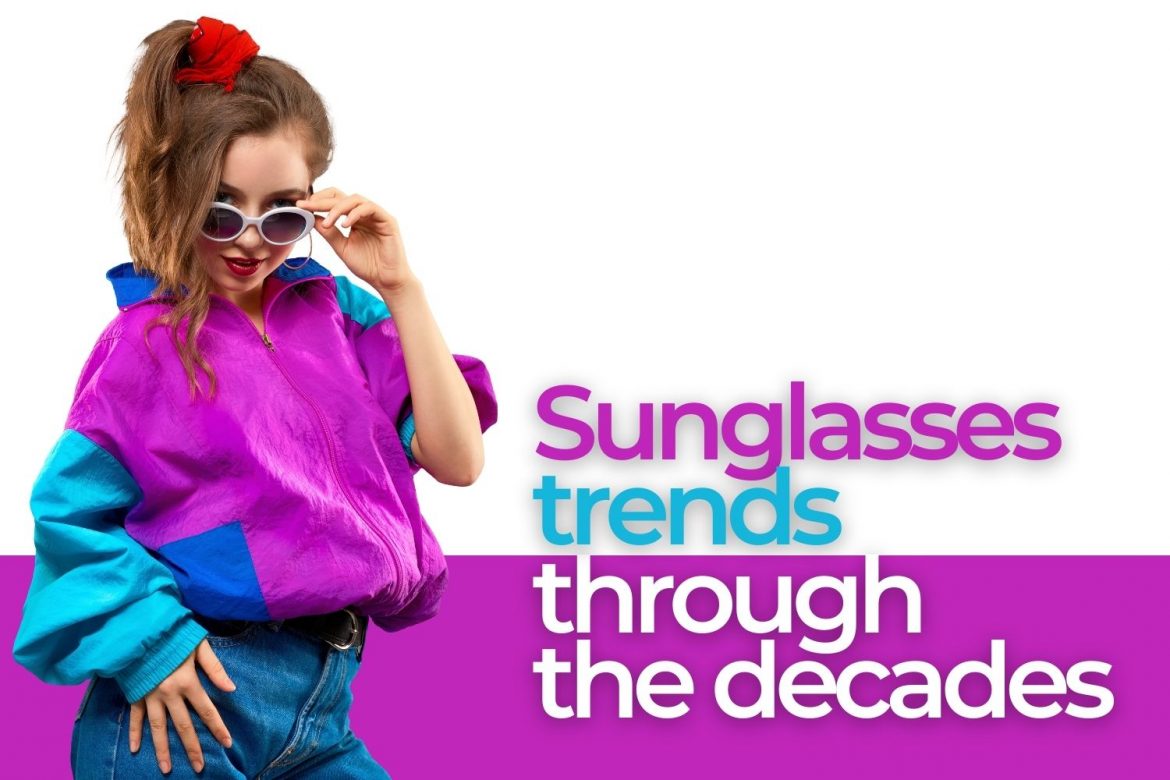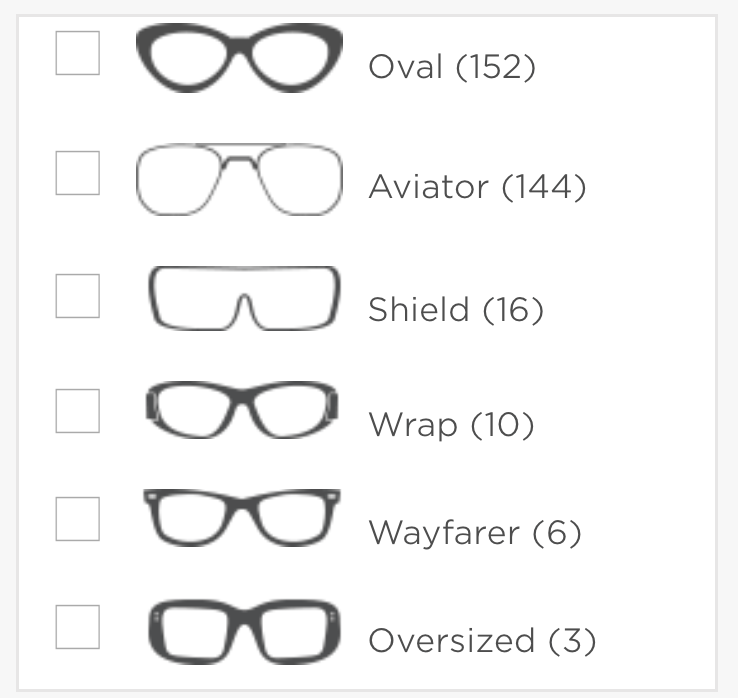![]()
Sunglasses styles have continued to change throughout the years. From oversized silhouettes on Jackie Kennedy to ultra-thin frames in the 90s, the trends evolve over time.
While sunglasses weren’t popularized until the 20th century, there are prototypes of sunglasses dating back to the Roman Empire when Nero would watch gladiator fights through glasses made of polished gems. However, it wasn’t until sunglasses were inexpensively produced in 1929 that people began to incorporate them into their everyday lives.
The trends of the time often took style cues from popular movies and the stars. From cult movie classes to feminist icons, there are often clear moments in pop culture that helped cement a trend of the decade.
Because fashion works in a cyclical motion, we often find trends having resurgences from decades ago, suddenly sprouting a new relevance. As you read about the trends over the years, you’ll recognize many of these from their third or even fourth time around the trend cycle.
Let’s take a stroll down memory lane to look at sunglasses trends through the decades.
1950s – Cat-eye and browline frames

While cat-eye glasses were actually invented in the 1930s, this flirtatious frame wasn’t widespread until the 1950s. These frames became known as cat-eye glasses because of the way their shape mimics a cat’s eyes. They continued to gain popularity from a wide array of backgrounds. Movie stars like Audrey Hepburn and Marilyn Monroe, to famous politicians to stay-at-homes, all favored an adaptation of the popular frame.
Check out:
Cool Cats: The Enduring Legacy of Cat-Eye Eyeglass Frames
Browline frames were the popular style amongst the male population at this time. Aptly named for drawing attention to the wearer’s natural browline, they were characterized by a dark, thick top portion of the frame, contrasted by a thinner lower metal frame in a squared-off shape.
Shuron Ronsirs originally released browline eyeglasses in 1947, when they were invented by the company’s vice president, Jack Rohrbach. He invented these glasses with one goal in mind—to act as completely customizable personal frames. You were able to change the fit, the size, and the color of the glasses, each composed of interchangeable brows, eye wires, and bridges.
This kind of innovation was instantly successful and completely dominated the prescription eyeglass industry, which is why the decidedly retro frame is synonymous with this era.
Check out:
Retro Browline Glasses: A Classic Favorite
1960s – The styles of Jackie O

Oversized frames seen on Jackie Kennedy dominated the scene of the 1960s. A beloved fashion icon, and the third youngest First Lady in the White House, her stylish ensembles were publicized in publications and broadcasts around the world.
A bouffant, Chanel suits, pillbox hats, and her signature oversized frames became a uniform for the sophisticated Jackie O— only to become the uniform imitated by women across the country. While her sunglasses would often vary in lens shape, from round, oval, square, or hexagonal, the silhouette always remained the same: dominant, bold, oversized frames that would cover much of her face. To this day, an oversized frame is largely associated with the former First Lady.
Check out:
Eyewear Favorites of Six Classic Rock Stars
1970s – The era of aviators

Aviators were originally developed in 1936 by Bausch & Lomb to protect pilots’ eyes and were standard issue for the military during WWII, however notable wearers like Gloria Steinem brought this silhouette to the mainstream in the ‘70s.
From acetate frames to yellow lenses, there were plenty of iterations of aviators throughout the decade. These were also the years that glasses were finally seen as an important fashion accessory rather than just a necessary addition for eyesight. The ‘70s were a decade of exploration and experimentation, as evidenced by the many playful options of this trusted silhouette.
Check out:
Aviator Sunglasses: An Enduring Classic Eyewear Style
1980s – Wayfarers

Nearly two decades later, Bausch & Lomb introduced the Wayfarer. Unlike aviators, the frames were made of sturdy plastic and favored a squarer look, though its corners were rounded.
Some describe the frame shape as “trapezoidal.” While the beginning of the wayfarers debuted as a classic, seen on the likes of James Dean and Marilyn Monroe, the sales shrunk dramatically during the ‘70s only to make a massive comeback in the ‘80s after smart product placements.
The Blues Brothers wore them in 1980 as did Tom Cruise’s character in the film Risky Business in 1983, and Michael Jackson donned Wayfarers on his tour that ran from 1987 to 1989. Sales exploded into the millions and have continued to be one of the most widely imitated frames to date.
Check out:
Types of Ray-Ban Wayfarer Sunglasses—An American Classic
1990s – Oval frames

Oval sunglasses were at their peak in the 90s, though not in the same oversized silhouette of the past. Instead, glasses of the ‘90s were oblong and smaller, mimicking the minimal preference of the time.
Street-style shots of Julia Roberts and Carolyn Bessette-Kennedy showed off these newly minuscule frames. While frames were getting smaller and smaller this decade, glasses trends seemed to catapult to the other side of the spectrum in coming years.
Check out:
An Oval-Framed Sunglasses Trend Has Taken Shape
2000s – An oversized revival

While Audrey Hepburn and Jackie O were original wearers of oversized frames, we saw a strong resurgence of oversized frames in the early aughts. Nicole Richie and Paris Hilton were devout followers of this larger-than-life trend. Whether they were bedazzled or featured chunky frames, almost everyone was wearing a larger round or oval frame, which is why they received the nickname “bug-eye” sunglasses.
Check out:
Early Aughts Eyewear: Sunglasses Trends from the 2000s
2010 – Aviators, again!

The 2010s held one of the strongest revivals of the aviator sunglasses from the ‘70s, further cementing that all trends will come back around eventually. Tiny sunglasses, round frames, and sporty frames have also experienced a resurgence in the past few years thanks to the trends of the past. It’s safe to say that any of the above frames make a smart addition to your wardrobe, to wear now or shortly again in the future.



